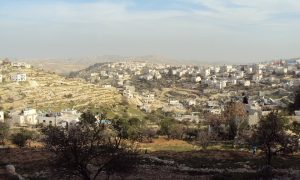Tanneries…
The hidden story
behind producing some of the world‘s softest, most luxurious leather products
in a previous issue of Middle East Business, we visited Morocco and talked about their beautiful oriental doors created by gifted artisans. It this issue, we focus on another type of specialised work, the tanning of hides, which produces some of the most colourful and softest leathers one can find in North Africa.
Do you like to wear real leather shoes, bags or jackets? If so, you should take time to visit a leather tannery to see if you still fancy wearing that leather once you›ve experienced the process that goes into making the finished product.
Tourists often choose to go to unusual places to experience wonderful food and smells of a new city. Those who choose Morocco as their destination, with its incredible old cities of Marrakesh and Fez, have so much more to experience – this could include a trip to one of the oldest tanneries in the world.
What is a tannery?
If you view a traditional tannery from above, the first thing you’d notice would be the large number of stone vessels of approximately four foot in diameter. Each vessel is filled with a dye and emits a specific odour directly linked to the contents of the mixture of the dye. The vessels look particularly photographic – colours such as grey, brown, pink, red, metallic blue, saffron yellow and many others – but any images can’t portray the sensory overload that hits any visitor to the tannery.
The tannery processes the hides (skins) of sheep and goats, in order to turn them into good quality bags, shoes, jackets and slippers etc.
What makes the tanning process unusual is that every stage is completed by hand (or foot!) … and in the harshest of conditions: in a hot climate, with mediocre wages, where even sometimes child labour is involved. The workers seem to be solely male, seeing them move between the stone vessels effectively dyeing their own skins with a multitude of colours.
However, all of this is nothing compared to the drifting odour that hangs around the place. As most tanneries are surrounded by inhabited houses, local occupants must tolerate one of the most unbearable smells known to man – that of wet, putrid stinking hide. And all in the name of creating beautiful leather goods.
The process of tanning stabilizes the collagen or protein fibres in animal skins so that they stop biodegrading – this enables the hide to retain its appearance and size, whereas it would normally dry up and shrink. Goat, sheep, camel and horse hides are used, with horse being the most difficult skin to deal with.
One of the noticeable things when visiting a tannery is the lack of protection for the workers. Even the simplest of procedures – such as ensuring that all workers thoroughly cleanse their skin after every shift – are not taken to protect the tanners who work very long hours using their unprotected legs and feet. Extreme physical activity is required to complete the different steps to manufacture the nice leather we see in the shop windows in the shopping malls of the world.
Tanning merited its reputation as being one of the most toxic industries on the globe, and deserved this reputation as being “extremely harmful to health” due to the heavy use of chrome in the manufacturing process. Chrome is known to be a cancer-causing material, and along with other highly toxic materials such as acids, natrium and ammonium salts. No figures could be found on the quantities used in Morocco and other Arab countries, but as an example – and since India is a country well known for its numerous tanneries – India consumed almost 70,000 tonnes of chrome in 2005 alone.
This harmful process doesn’t just affect the tanners, but also affects the local community. In many countries, tanneries are located in the poorer neighbourhoods and therefore in the middle of densely-populated residential areas. According to the Center for Disease Control and Prevention, the incidence of leukemia among residents in an area near one tannery in India was five times the US average.
Tannery workers are most susceptible to lung, bladder and mouth cancers. Studies of leather-tannery workers in Sweden and Italy found cancer risks “between 20% and 50% above [those] expected”, according to many sources.
The city of Fez – established in the 9th century and now home to over one million people – has 58 established tanneries inside its Old Medina, which was designated a UNESCO World Heritage site. It hosts three ancient leather tanneries, the largest being the Chouara Tannery, which has been washing, treating, smoothing and coloring animal skins into soft leather goods for over a thousand years. Walking through its streets, you can easily distinguish the tannery workers on their morning trip to their workplace. One must be highly motivated to work there long-term, but even so, some tannery workers have been there so long that they no longer smell the putrid stench experienced by visitors.
Although this industry employs hundreds of thousands of workers, assuring them their daily bread, in a country where the official unemployment rate is 9%, and 15% of the population lives below the poverty line, there are no clear statistics of how many workers take part in tanning and how much this industry contributes to the GDP of Morocco.
Within Morocco’s economy, industry makes up approximately 20% of the total labour force, about 11 million people in total. According to Ouche Organisation, the leather industry is the largest exporter (to Spain, France and India) and exports up to 100 million shoes annually.
In conclusion, I hope that after reading all about the dirty, hard labour involved with making the leather handbags, wallets or jackets, you can still enjoy a trip through the leather market souks in different cities across the Middle East and enjoy walking in the famous leather “yellow Baboush (slipper)”, with your head held high (and your nose free to smell the fresh air!) of this traditional artisanal industry, deeply rooted in our region! Our incredible visit to the tannery of Fez, that smelled so horrible but produced such beautiful end products, reminded us of a visit we took years back to the famous French city of Grasse in the South of France. Grasse produces amazing perfumes for the whole world – as with a tannery, while the smell of the basic materials during processing is absolutely horrendous, the end product is sublime and well worth the olfactory discomfort! Grasse has a long way to go to compete with the nose busting stench of a tannery.
10 Steps and 20 days
to create your perfect Baboush: a journey from living animal to stylish slipper
Step 1: Kill and skin the animal
Step 2: Dry the skin
Step 3: Remove the hair from the dried and dirty hides
Step 4: Scrape and clean the skin with a knife after soaking in a vat of water
And now … cover your nose!
Step 5: Soak in a fetid vat of water and pigeon dung! (Bird guano contains ammonia and acts as a softening agent). Only the strongest workers can spend half a day in these giant vats to achieve the required softness of the skin
Step 6: Take the skin to the dyeing vats to be left to soak for seven days
The finishing touches…
Step 7: Massage the skin with olive oil
Step 8: Dye the skin with poppy flowers (red), indigo (blue), henna (orange), cedar wood (brown), mint (green) or saffron (yellow)
Step 9: Stretch the skin out to dry in the sun
Step 10: Cut the skin to be sold to merchants and craftsmen in the country.




























